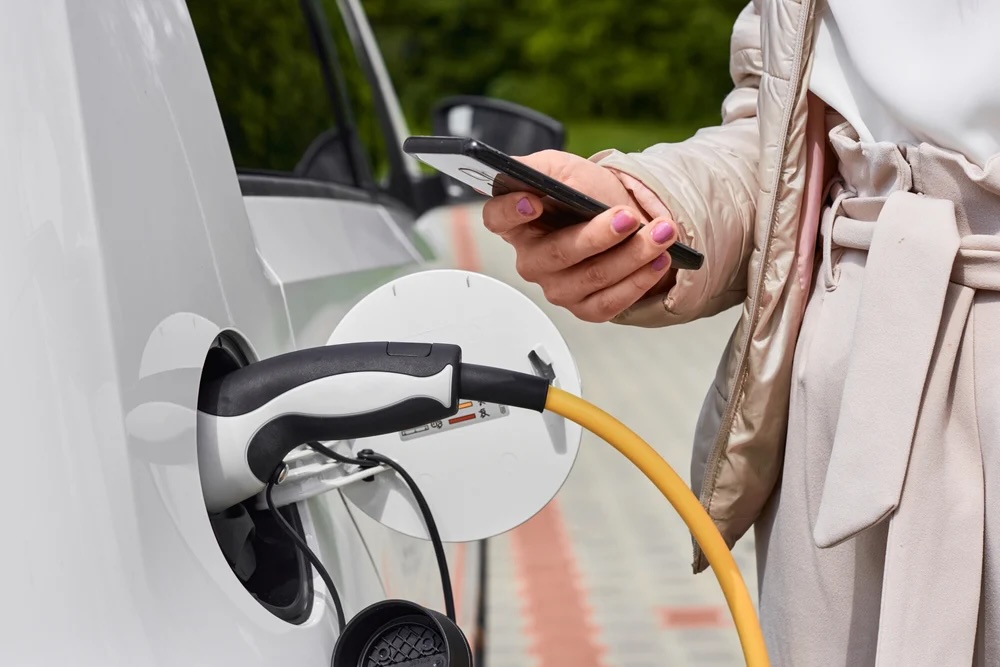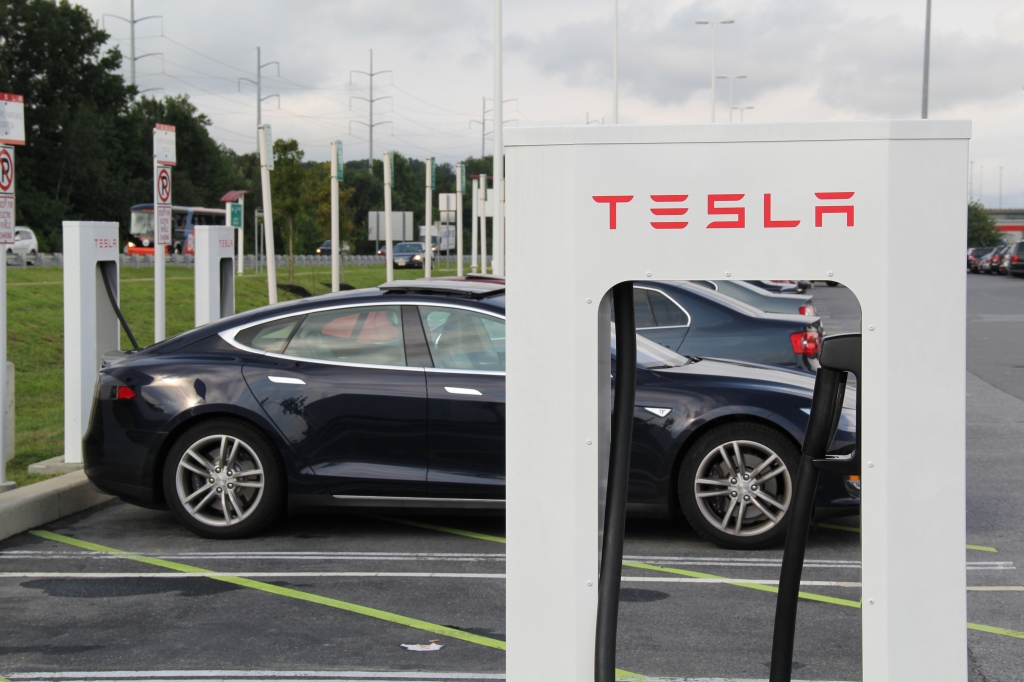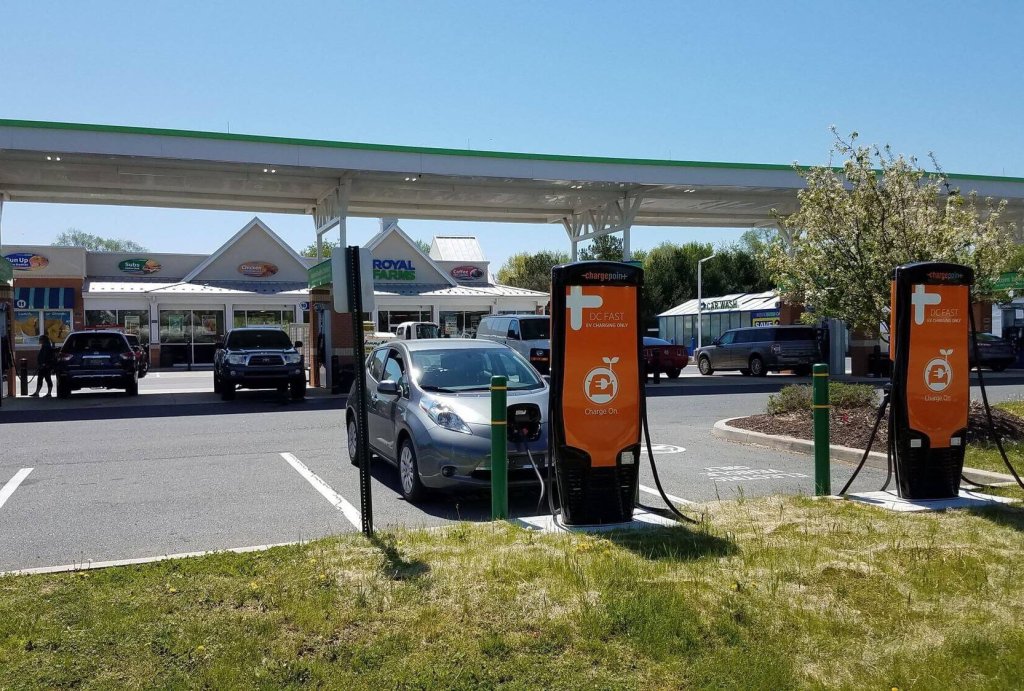Electric Vehicle Charging We Can Count On
Unreliable chargers could hold back electric vehicle adoption. Policymakers need to intervene.
Consumers embraced electric vehicles like never before in 2023. Electric vehicle sales increased by 50% relative to 2022, compared to just 2% growth for gas-powered vehicle sales. Yet consumer surveys are revealing an uncertain future. A new Gallup survey found that 48% of consumers would not consider buying an electric vehicle in the future. This is an increase over last year’s survey’s 41%. The trend is going in the wrong direction.
Automakers are working hard to appeal to consumer tastes, bringing over 100 electric vehicle models to market. The federal government is offering substantial subsidies for buyers to address the cost barrier. But some consumers want none of it. Political polarization is part of the explanation with some drivers associating electric vehicles with a progressive environmental agenda that they reject. But another factor that tops consumer surveys is that there are too few charging stations.
The 2021 Bipartisan Infrastructure Law tries to address this barrier by allocating $7.5 billion to expand the country’s public charging network. “Public” in this context means the chargers are accessible to all drivers. They could be owned or operated by a private business, charging provider or a government host. But the number of charging points is not the only shortcoming of the network. Media stories have highlighted that existing public chargers, specifically chargers not owned by Tesla, are plagued by reliability problems. A recent study by J.D. Power found that one-fifth of attempts to use a public charger are unsuccessful. Problems cited in the media include out-of-service chargers, unsuccessful software connections between the charger and vehicle, and malfunctioning payment systems. Gas stations, by contrast, are highly reliable.

—
Poor charger reliability is hurting consumer confidence in electric vehicles, and the upcoming investment in new charging stations will do little to spur electric vehicle adoption if consumers remain concerned about charging. As part of the policy nudges toward electric vehicles, the Federal Highway Administration, which oversees the largest charging subsidy program, and the state agencies that are implementing the federal program, should ensure that they are building a reliable network.
It is not clear why public chargers are so unreliable, but I see a few clues. I would expect that companies would be incentivized to increase reliability in order to sell more charging and generate more profits. However, there are indications that operating a charging station is a money loser. Two of the largest stand-alone charging companies, ChargePoint and Blink, have been generating larger and larger losses year-on-year. Stock market investors don’t see things changing anytime soon so these two companies’ stock prices have dropped 83% and 69%, respectively, over the past year. Perhaps companies lose less money when a charger is broken than if they pay to fix it.
The most reliable charging operator, Tesla, has had an entirely different business model. They were motivated to deploy a reliable system in order to sell cars. Until very recently, their network of superchargers was only usable by Teslas and was primarily developed to increase vehicle sales. It was not intended to be a separate source of profit. By vertically integrating into charging they have been able to seamlessly address issues like software communication between the charger and vehicle and payment systems. Third-party charging companies have struggled to execute these areas well.

—
Tesla recently decided to change direction and open up their network by allowing other automakers to adopt the Tesla charging standards. Research by MIT Professor Jing Li has found that moving to common charging standards can help consumers and the electric vehicle market, so this is an encouraging development. I’ll be very interested to see if Tesla can maintain its high levels of reliability as it starts serving a broader market.
What can policymakers do to increase the reliability of the rest of the charging market?
I see two opportunities. One approach is to restructure the form of subsidies. The biggest federal subsidy program for charging is the $5 billion National Electric Vehicle Infrastructure (NEVI) Formula Program. The program covers up to 80% of charging station costs, including operations and maintenance costs for the first five years. The program’s focus on costs will motivate the recipients to spend money. Getting new charging stations up and running is a program goal, so that makes sense. Adding performance incentives, such as a per-kilowatt of sales subsidy or penalties for outages, could be a way to additionally motivate charging operators to deliver reliable charging services.
Federal subsidies for wind illustrate how performance-based subsidies can improve performance. Research by Joseph Aldy, Todd Gerarden, and Richard Sweeney estimated that wind farms that received an up-front investment subsidy produced 10% to 12% less than they would have if they had received a subsidy for each unit they produced. I expect converting some of the up-front subsidy for charging stations into a per kilowatt-hour subsidy would also improve system throughput, both through better reliability and other decisions that increase usage such as choosing the best locations.
Another opportunity is to encourage experimentation in different business models. This is already emerging as a feature of the NEVI program. States, which administer the NEVI program, are funding a variety of organization-types. Texas, for example, has awarded funding to – gasoline retailers, oil companies, stand-alone charging companies and an auto company (Tesla). I am excited to see this variety. States and the federal government should collect program data, including reliability data, and make this data available to researchers.

—
Many consumers want widespread and reliable public charging before they make the move to an electric vehicle. The federal government has made a big commitment to making charging more widespread. The Federal Highway Administration and state agencies need to make sure those chargers work.
Follow us on Bluesky and LinkedIn, as well as subscribe to our email list to keep up with future content and announcements.
Suggested citation: Campbell, Andrew. “Electric Vehicle Charging We Can Count On” Energy Institute Blog, April 15, 2024, https://energyathaas.wordpress.com/2024/04/15/electric-vehicle-charging-we-can-count-on/
Categories
Andrew G Campbell View All
Andrew Campbell is the Executive Director of the Energy Institute at Haas at the University of California, Berkeley. At the Energy Institute, Campbell serves as a bridge between the research community, and business and policy leaders on energy economics and policy.

My experience is that way more than 20% of non-Tesla chargers don’t work and nearly 100% of the functioning chargers are frustrating to use. Furthermore, the functioning chargers take way too long to charge a car – it takes five to ten minutes to fully fuel an ICE vehicle and over an hour or many hours for electric vehicles. While this phenomenon gets much less attention than the failure of so many charging stations, ultimately, the length of time per full charge will determine adoption of electric vehicles.
Thanks for the blog, Andrew, well done!
Charging at night defeats the whole reason to even owning an EV since nighttime energy is 90% fossil fuel derived no matter if you are charging at home or on the road. If you are retired and like to take long drives to see the grandchildren on the weekends or get to the port of call to embark on a luxury cruise, then rooftop solar charging an EV just might work for you. Plugging in at home when the sun is high, puts all that extra energy into one’s weekend trips or even the trip to the grocery store into clean energy. With NEM3.0 in California, sending extra power to the grid is a losing proposition but filling ones EV at Tier one or tier two charging at home, with the output going to the car’s battery and never importing power from the grid, could save a lot of money. One needs to put at least 10,000 miles on an EV a year to warrant the extra cost of the EV over an ICE vehicle, so if you are like me and only putting 3,000 miles a year on the car, the fuel savings is not as great as the extra cost. Solar powering your home is the better choice just watch out for the hidden costs of battery replacements every 12 to 14 years. Happy driving.
It is understandable why some people don’t want to buy electric cars. Electric cars are more dangerous
This article seems to be outdated. EV sales have cooled down.
Decades ago, during my corporate life, I spent way too many hours at the office, corporate campus, to consider using a public charger to fill up an EV tank.
Having a reliable charging option at work/office/plant/etc. would have been high on my list of must haves.
Mark Miller
Last October, on the Friday of a 3-day holiday weekend, I flew into Boston and was “offered” an EV at half the regular rental price from the company with which I had made my reservation. My reservation had been for a compact ICE vehicle, but the rental company told me that they were falling short on renting out the necessary number of EVs in accordance with MA’s EV incentives and requirements (or something to that effect). Moreover, a signficant number of customers who had gotten their rentals before me on this busy day apparently had balked at the EV option, so the rental rep told me he was running low on ICE vehicles for rent. In other words, “PLEASE rent an EV at half price!” I did.
I was traveling to stay with relatives in Meredith, NH, about 35 miles north of Concord, and I thought there was a chance I wouldn’t even need a charge before returning the vehicle to Boston’s Logan Airport the following Monday. (I was not told that I needed to bring the car back fully charged, unlike the usual rental return requirement to have a full tank of gas.) But, sure enough, after a few nice drives through the NH countryside, it turned out that I did need a charge for an extra 50 miles when I headed back to Boston.
I had passed a large New Hampshire Welcome Center just off the freeway between Manchester and Concord on my way to Meredith, and I remembered the big sign there for EV charging. So, after I pulled in there as I headed back, I saw a long line of shiny Tesla chargers, but no others that could charge my Nissan. I was told that the only public chargers that could were at a Manchester shoping mall about 9 largely out-of-the-way miles from where I was. When I arrived at the rather sprawling mall I had to ask where the chargers were; soon after that I found them. There were 4 at this ChargePoint station, but two were out of order, and the other two were being used. Fortunately, one customer finished charging not long after I arrived. I plugged in and anxiously waited for a sufficient charge as my concerns grew about possibly missing my flight at Logan, and the charge seemed to move the needle at a snail’s pace.
I was lucky that traffic was light as I headed back to Logan, and when I got to the car rental return, I had 10 miles left on the battery. I made my flight, but, as a long-time Prius owner, I gained a much greater appreciation of why hybrid sales are signficantly outpacing EV sales. As Andrew notes, we need MUCH more charging that we can count on — and find — and we need it soon.
Good thing your trip was in October! I thought of your experience last night when listening to Walter and Matt’s podcast- “America This Week, April 19, 2024: (racket.news) “”To Build a Surveillance State.”
https://www.racket.news/p/america-this-week-april-19-2024-to
“What does the “Right to Knowledge” mean, and why is it so dangerous? Walter and Matt ponder the less funny side of the Katherine Maher story. Plus, “To Build a Fire,” by Jack London.”
I don’t think you would have made your flight if the trip had been in the colder months of the year. Your experience reminded of the time I lucked out getting back to my folk’s place in my Silver 74 Mercury Capri after being pulled out of a snowbank about a foot away from Railway Crossing buttress in the Upper Peninsula. I really shouldn’t have tried to outrun the blizzard.
Mark Miller